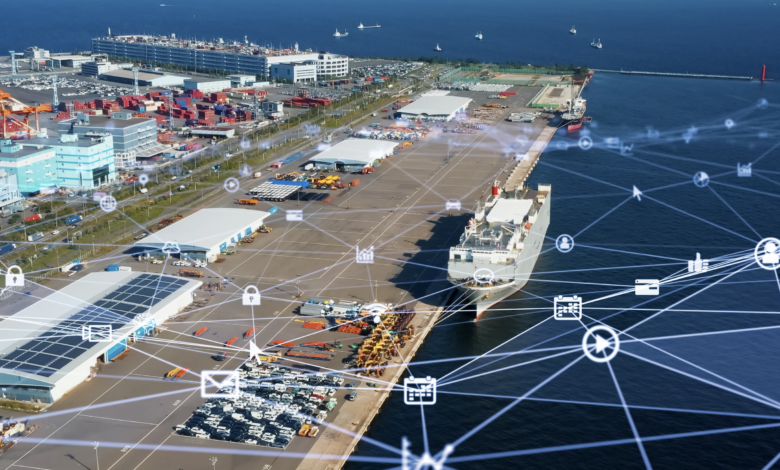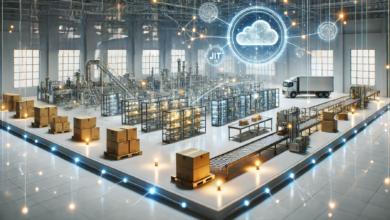
The Collins Dictionary word of the year in 2022 was permacrisis, which is defined as “an extended period of instability and insecurity, especially one resulting from a series of catastrophic events”. We’re certainly experiencing this, as shown by the challenges surrounding supply chains and those working with them across many industries, which can make it easy for sustainability to slip down the list of business priorities. And, for organisations trading globally, monitoring and controlling scope 3 emissions has often been considered as beyond the remit of a single business’s responsibility, but all this is about to change.
With the enforcement of the new Corporate Sustainability Reporting Directive (CRSD), from 1st January 2024, organisations must make the monitoring and reporting of emissions produced across their supply chains a business priority. The good news is that making changes that will positively impact emissions and the wider business is possible, and AI can help achieve this effectively.
Meeting the challenge
The regulation is far from toothless with UK firms set to be charged up to £40 per tonne of CO2 emissions misreported under the new regulations. What’s more, it’s not just non-compliant companies that will be named and shamed by the EU – a full record of companies that fall under the reach of the directive will be published so consumers will be able to compare the long-tail emissions of one business to another. With research from NYU showing that products marketed as sustainable grow 5.6 times faster in popularity than conventionally marketed products, organisations must consider the role of public perception when scope 3 emissions are made public.
A proactive approach to Scope 3 emissions
With supply chain emissions accounting for as much as 11.4 times higher than operational emissions, these need to be calculated accurately, rapidly, and continuously. AI powered platforms can enable a continuous reporting and analysis process, as opposed to snapshots provided by irregular compliance reports. Companies that choose to integrate these tools into their supply chain management systems, will be able to make more informed business decisions to make their supply chains smarter and more sustainable in a cost-effective manner. For those looking to be proactive and do more than simply comply with the mandate, monitoring tools are available that also provide actionable insights to reduce scope 3 emissions. In terms of a business’s responsibility to the planet, and an increasingly climate conscious consumer base, this point is key.
Putting AI at the heart
Continuous access to real-time data improves the agility and resilience of companies and their supply chains – organisations no longer have to make decisions retroactively and can instead be proactive in their approach to external emissions across their supply chains. Investing in predictive AI optimisation technology that increases data visibility throughout the supply chain is crucial for those looking to reduce costs and meet emission reduction targets. 7bridges has found that AI can be used to address up to 30% of sustainability issues within supply chains within weeks of implementation. This includes the optimisation of energy use in the storage stock, reducing the carbon footprint and lowering partners costs. This is just the first step in a proactive approach to scope 3 emissions.
Outcome driven management and optimisation supply chain technologies that streamline the collection, analysis, and application of emission data by automating data extraction will also help businesses perform better. AI tools can be used to automate invoice auditing to determine carbon emission level per shipment. There are integrated AI powered platforms capable of monitoring this alongside other supplier data like cost and performance level, and presenting the data in a manner that is easy to understand. These insights allow organisations to make informed decisions to reduce emissions while maintaining a strong cost-performance balance.
AI technologies can enable companies to find a route to improvement that continues to serve wider business goals of maintaining service level and reducing costs as well as delivering on commitments to sustainability. Detailed breakdowns of the various stages within the supply chain allows businesses to recognise which of their suppliers are the worst offenders and supply negotiation points for a more cost-effective and greener service.
AI tools can not only empower optimisation of supply chains, but they can also be used to maintain business efficiency, whilst reducing emission production. With the upcoming regulation, it is imperative that businesses not only understand their emissions but identify ways to improve them quickly; AI platforms can offer this insight and provide the answers.
In a world where people are more aware of supply chains and sustainability than ever before, becoming a low emissions leader can be the way of standing out in a crowded landscape. It can enable a business to maintain, and even grow market share, by showing customers and prospects that the organisation takes a proactive, environmentally conscious approach to emissions reduction.




